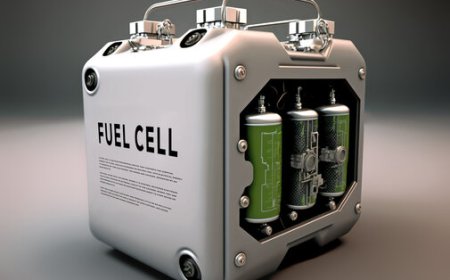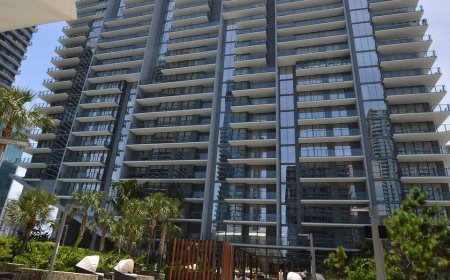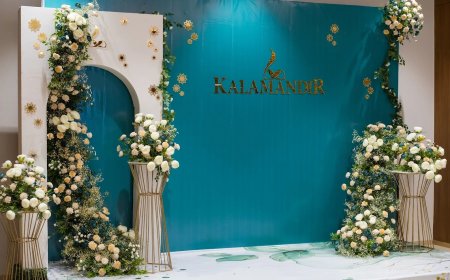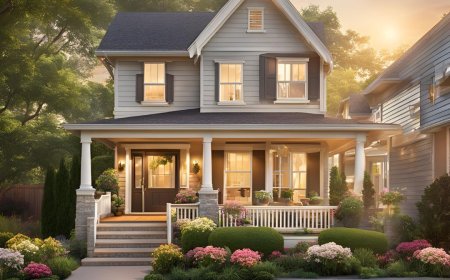A New Chapter in Commercial Architecture Begins in Sector 140A

Commercial architecture has entered a fresh eraone driven by the evolving needs of businesses, environmental awareness, and community integration. In Noidas Sector 140A, this transformation is unfolding through CRC The Flagship, a development that exemplifies how modern office complexes are more than just buildings. They are thoughtfully designed ecosystems that respond to the demands of hybrid work, experience-oriented visitors, and sustainable operation.
Rather than merely offering space, this new wave of commercial architecture redefines how people work, connect, and engage with their surroundings. In this article, we examine the emerging trends in office and commercial design, explore the drivers behind this shift, and analyze how development in Sector 140A is setting a new benchmark in the region.
Setting the Context: Why Sector 140A Matters
Sector 140A has quickly emerged as a strategic node in Noidas commercial map. Its appeal stems from several factors:
-
Connectivity: Close access to the Noida-Greater Noida Expressway and upcoming metro lines.
-
Population Reach: Proximity to residential sectors ensures consistent daytime footfall.
-
Economic Planning: Development of business parks and healthcare institutions in the vicinity.
-
Land Efficiency: Balance of large, planned plots and mixed-use zoning.
-
Urban Vision: Integration with civic infrastructure and future-forward vision.
In this context, CRC The Flagship stands out as a project designed not only for commerce but for community, productivity, and sustainability.
Redefining Office Architecture for the Modern Workforce
Gone are the days of monotonous cubicles and closed-door offices. Todays professionals seek vibrant, flexible, and wellness-oriented work environments.
Design principles defining modern office spaces:
-
Hybrid Layouts: Mix of open boards, private huddle zones, and quiet pods.
-
Indoor Light Integration: Abundant daylighting through large windows and skylights.
-
Natural Ventilation: Atriums or cross-ventilation to improve air quality.
-
Modular Flooring: Units designed for flexible sub-division or expansion.
-
Amenity-Rich Zones: Cafs, informal meeting points, and fitness areas.
These elements collectively enhance employee satisfaction, retention, and productivityall essential for contemporary workplaces like those in CRC The Flagship.
Sustainability at the Heart of Design
Environmental responsibility is no longer optionalit is central to sound commercial real estate.
Sustainable building features increasingly found in new developments:
-
Passive Design: Orientation and faade choices that reduce heating or cooling demands.
-
Renewable Power Sources: Rooftop solar panels for shared area consumption.
-
Rainwater Systems: Harvesting, filtration, and reuse for sanitation or landscaping.
-
Energy Efficiency: LED fixtures, smart meters, and automated lighting systems.
-
Waste Reduction: Segregation infrastructure and composting for food zones.
-
Green Surfaces: Vegetable gardens, green roofs, and planter-rich terraces.
At CRC The Flagship, integrating these features ensures better operational efficiency and lower carbon impactbenefitting both tenants and the surrounding area.
Flexibility and Adaptability: The Twin Pillars
Space that cannot adapt quickly falls short in modern commercial contexts. Businesses and brands evolve in size and nature, and buildings must evolve along with them.
Building elements that support future adaptability:
-
Demountable Walls: Allowing units to grow or shrink as needed.
-
Multi-Utility Core Areas: Central spaces for MEP systems that support diverse layouts.
-
Scalable Open Zones: For co-working, events, or desking expansion.
-
Prebuilt Grids: For interior customization by tenants without structural interference.
-
Variable Leasing Options: From pocket-sized units to large office floors.
Such flexibility enables buildings to remain relevant as market demands and business models shifta feature evident in the planning of CRC The Flagship.
Connectivity and Mobility: A Building in Sync with Its City
Todays commercial architecture doesnt exist in a vacuumit is part of a larger urban fabric that combines mobility, convenience, and access.
How buildings mesh with city infrastructure:
-
Walkable access to metro, bus, and taxi stops
-
Covered entryways for drop-offs and pickup points
-
Integrated EV charging and bicycle parking
-
Ground-level retail to serve daily users
-
Seamless connections to pedestrian footpaths and civic routes
All of these elements enhance how CRC The Flagship connects to the surrounding workforce and communities.
Experience-Driven Design for Retail and F&B
Including food, retail, and casual social zones within commercial complexes serves not only employees but also visitors, supporting both community engagement and daily convenience.
Popular amenity features include:
-
Ground-level cafs and mini food courts
-
Outdoor plazas for lunch, casual meetings, and micro-events
-
Rooftop terraces for informal gatherings or evening meetups
-
Shared lobbies with lounge seating and curated greenery
-
Supporting services like dry cleaning, health kiosks, or pharmacies
These design elements enhance social interaction and make spaces like CRC The Flagship destinations in their own right.
Health and Wellness: Designing Beyond Aesthetics
Commercial buildings today have become extensions of health and wellbeing, recognizing their role in occupant wellness.
Facility elements that support human-centric design:
-
Air-purifying systems and plant-filled atriums
-
Natural light to enhance mood and reduce strain
-
Quiet rooms for relaxation or prayer needs
-
Active design features like staircases near open areas
-
Fitness zones to support daily activity
Such features enhance work culture and reflect the holistic planning seen in CRC The Flagships layout and amenities.
Investment Perspective: Architecture That Pays
From an investors standpoint, architecture influences value and returns:
-
High-Grade Tenant Attraction: Quality design draws premium firms.
-
Long-Term Leases: Good workplace culture increases occupancy.
-
Higher Rental Listings: Design premiums support lease rates.
-
Portfolio Diversity: Flexible units support multiple business types.
-
Lower Exit Risk: Future-ready buildings retain relevance.
CRC The Flagship leverages these attributes by providing a commercial ecosystem that appeals to both occupiers and back-end investors.
Environmental and Social Impact on Urban Planning
Well-designed commercial architecture extends its impact beyond tenantsit shapes neighborhoods.
Positive consequences include:
-
Less traffic strain through integrated amenities
-
Cleaner air from green space and carbon reduction
-
Increased public reach through accessible retail zones
-
Local economy growth from service requirements
-
Community engagement through events and public outreach
This demonstrates how CRC The Flagship contributes to the urban sustainability of Sector 140A.
Looking Ahead: What the Future Holds
The next wave of commercial architecture will continue to push boundaries in:
-
Plug-and-play office pods
-
AI-driven facility management
-
Tenant engagement apps
-
Circular economy infrastructure
-
Resilient systems for climate adaptation
Projects planned along the lines of CRC The Flagship are likely to incorporate these progressive features, making them more than mere buildingsthey become intelligent, living platforms aligned with city-wide strategy.
Conclusion
A new chapter in commercial architecture is being written in Sector 140A, led by developments like CRC The Flagship. Here, architecture is more than structure: it is a driver of sustainability, workplace culture, and urban resilience.
As businesses, investors, and city planners seek projects that align with future realitieshybrid work, environmental responsibility, and experience-based designCRC The Flagship offers a compelling example. It demonstrates that commercial buildings can be agile, efficient, and built to last in both human and ecological terms.
This emerging model in Sector 140A is proof that commercial architecture can deliver more than just workspace. It can shape better citiesand better livesfor all.




























